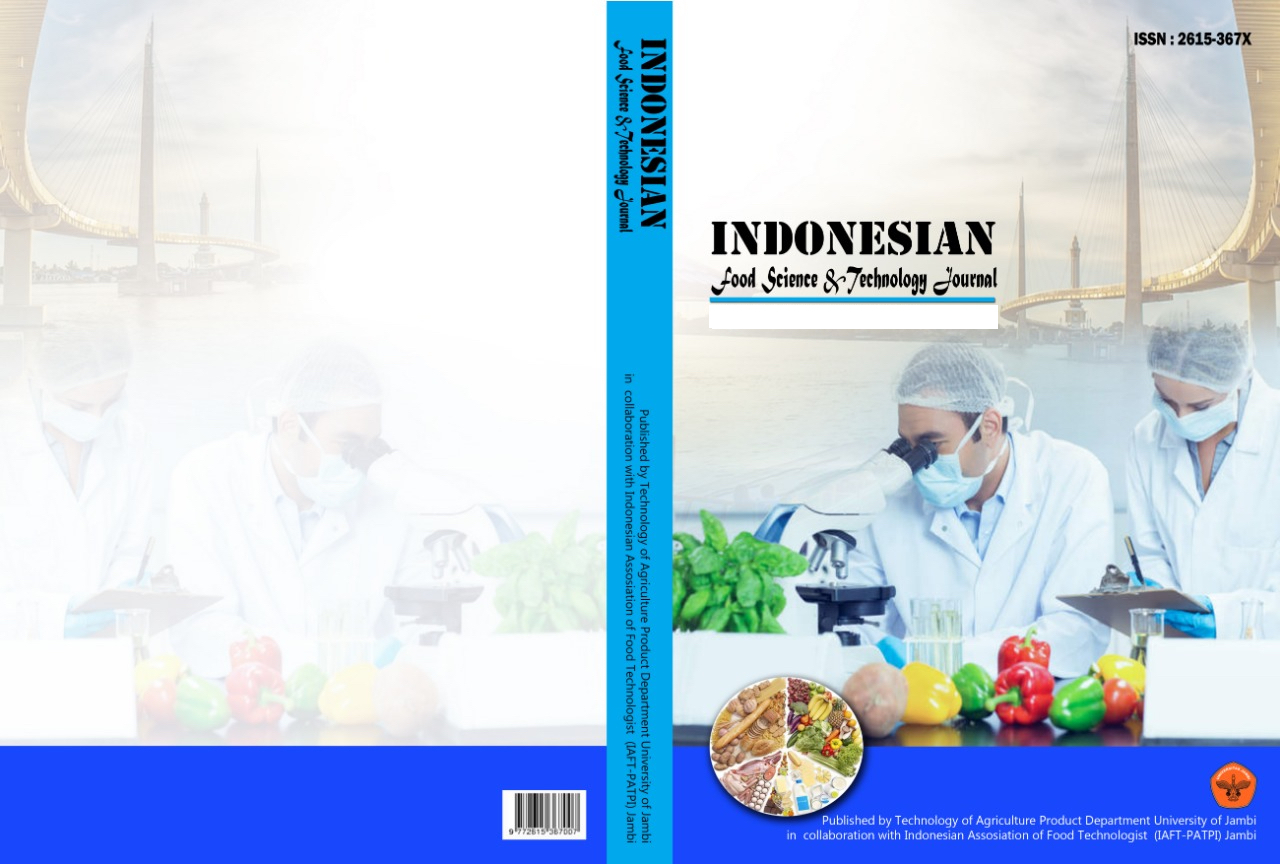Evaluation of The Nutritional Quality of Kuli-kuli (Peanut cake) Produced from Melon seeds and Groundnut.
DOI:
https://doi.org/10.22437/ifstj.v4i1.10725Abstract
In the bid to enhance human health and secure food safety as well as public health enlightenment to food, there is the need to evaluate the Nutritional quality of Kuli-kuli from melon seeds. Kuli-kuli which is majorly produced from groundnut is one of the major snacks consumed by most Nigerians especially in the North.The use of melon seeds in the production of Kuli-kuli is not known. Therefore, this research work was carriedout to produce and evaluate the nutrient of Kuli-kuli produced from Melon seeds. Sensory evaluation showed that the Kuli-kuli produced from melon seeds varied in appearance, aroma, texture, taste, and acceptability.
Downloads
References
A. A. Adebesin, O. T. Saromi, N. A. Amusa, S. O. Fagade. Microbiological quality of some groundnut products hawked in Bauchi, a Nigerian City. The Journal of Food Technology in Africa 2001; 6(2): 53–55.
A. A. Yusuf, S. Adewuyi, and A. A. Lasisi. Physicochemical composition of leaves, meals and oils of fluted pumpkin (Telfairiaoccidentalis) and melon (Citrullus vulgaris). Journal of Agriculture. 2006, 1, 32-35.
A. L. Kolapo, G. R. Oladimeji, A. I. Ifejika, E. O. Osakine, I. R. Eyitayo and O. A. Oyelakin. Aflatoxin, Nutritive Value and Microbiological status of stored cakes of some selected Nigerian oil seeds. Glob. J. Sci. Frontier Res. Agric Biol., 2012, 12(5): 1-10
A. L. Loukou, D. G. Y. Nakri, A. Dje, V. K. Ippre, M. M. Alice, J. P. B. Audoin and B. I. A. Zoro. Macronutrient composition of three cucurbit species cultivated for seed consumption in Cote d’Ivoire. African Journal of Biotechnology, 2007, 6(5), 529-533
C.N. Ibeto, C. O. B. Okoye and A. U. Ofoefule. Comparative study of the physicochemical characterization of some oils as potential feedstock for biodiesel production. ISRN Renewable Energy, 5p. 2012, Article ID: 621518
E. Fokou, M. B. Achu and F. M. Tchounguep. Preliminary nutritional evaluation of five species of egusi seed in Cameroon. African Journal of Food, Agriculture, Nutrition and Development, 2004, 4, 8.
E. N. Onyeike and G. N. Achera. Chemical composition of selected Nigerian oil seeds and physicochemical properties of the oil extracted. Food Chemistry. 2002, 77, 431-437.
G. R. Oladimeji and A. L. Kolapo. Evaluation of proximate changes and microbiology of stored defatted residues of some selected Nigerian oil seeds. African Journal of Agricultural Research; 2008, 3(2): 126–129.
H. Mian-Hao and A. Yansong. Characteristics of some nutritional composition of melon (Cucumis melo hybrid “ChunLiâ€) seeds. International Journal of Food Science and Technology, 2007, 42, 1397-1401
L. Chen, Y. H. Kang, and J. K. Suh. Roasting processed oriental melon (Cucumismelo L. var. makuwa Makino) seed influenced the triglyceride profile and the inhibitory potential against key enzymes relevant for hypoglycemia. Research International. 2014, 56, 236-242
M. A. Abiodun and R. O. Adeleke. Comparative studies on nutrition composition of melon seed flour varieties. Pakistan Journal of Nutrition, 2010, 9(9), 905-908
M. L. S. De Mello, P. S. Bora and N. Narain. Fatty and amino acids composition of melon (Cucumis meloVar. saccharinus) Seeds. Journal of Food Composition and Analysis, 2001, 14, 69-74.
M. O. Akusu, and D. B. Kiin-kabari. Comparative studies on the physicochemical and sensory properties of watermelon (Citrulluslanatus) and Melon (Citrullus vulgaris) Seed Flours Used in “egusi†Soup Preparation. Journal of Food Research. 2015, 4(5), 1-8.
N. A. Obasi, J. Ukadilonu, E. Eze, E. I. Akubugwo and U. C. Okorie. Proximate composition, extraction, characterization and comparative assessment of coconut (Cocos nucifera) and melon (Colocynthis citrullus) seeds and seed oils. Pakistan Journal of Biological Sciences, 2012, 15, 1-9.
O. Aletor and A. Ojelabi. Comparative evaluation of the nutritive and functional attributes of some traditional Nigerian snacks and oil seed cakes. Pak. J. Nutr. 2007, 6(1):99-103.
O. H. Raji and O. T. Orelaja. Nutritional composition and oil characteristics of gold melon (Cucumis melo) seeds. Food Science and Quality Management, 2014, 27, 18-21.
S. Azhari, Y. S. Xu, Q. X. Jiang and W. S. Xia. Physicochemical properties and chemicalcomposition of Seinat (Cucumis melovar. tibish) seed oil and its antioxidant activity. Grasas y Aceites, 2014, 65(1), 8-12
S. G. Ademola, M. D. Shittu, M. O. Osanyande and O. E. Omidiji. Effects of Mycotoxin DetoxifierSupplementation to Contaminated Groundnut Cake on the Growth Performance, Organs and Serum Enzymes of Two Broiler Strains. International Journal of Agriculture Innovations and Research, 2015, 4(2):2872-34. DOI:http://ijair.org/administrator/components/com_jresearch/files/publications/IJAIR_1545_Final.pdf
S. Yagci and F. Gogus. Response surface methodology for evaluation of physical and functional properties of extruded snack.foods developed from food-by-products, J. Food Eng., 2008, 86: 122-132.
Z. A. Boli, L. T Zoue, W. M. Alloue-Boraud, C. A. Kakou, R. Koffi-Nevry. Proximate composition and mycological characterization of peanut butter sold in retail markets of Abidjan (Côte d’Ivoire). Journal of Applied Biosciences, 2014, 72(1): 5822-5829.
Downloads
Published
How to Cite
Issue
Section
License
Copyright (c) 2021 Solomon Achimugu, Mrs Judith C. Okolo

This work is licensed under a Creative Commons Attribution 4.0 International License.









